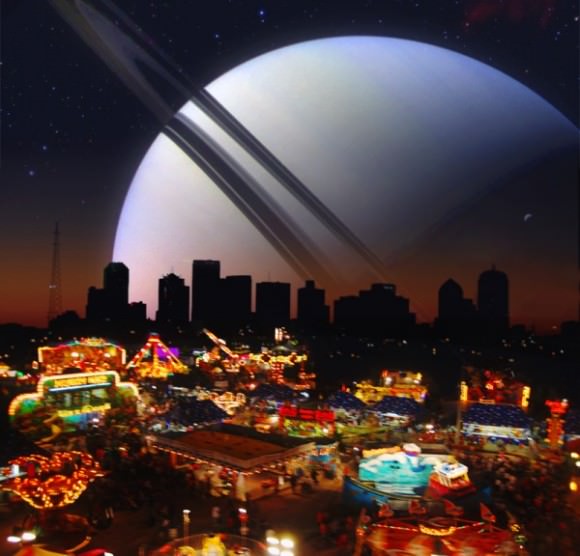Welcome, come in to the 451st Carnival of Space! The carnival is a community of space science and astronomy writers and bloggers, who submit their best work each week for your benefit. I'm Susie Murph, part of the team at Universe Today and CosmoQuest. So now, on to this week's stories!
Our first stop is over at
Blasting News
, where California Rep. Dana Rohrabacher has introduced a bill in Congress entitled ''Space Exploration, Development, and Settlement Act of 2016." The bill, H.R. 4752, which is similar to one that Rohrabacher introduced in 2015, would, require NASA to investigate and promote human exploration and settlement in space. You can read more of
this interesting bill here
.
The next article, also from Blasting News, reports on a modern approach to building space-based solar energy stations using robots as the construction force. You can read more of
that article here
.
Next, we have a publication by Dr. David Kring of the
Lunar and Planetary Institute
- Chicxulub Crater, Twenty-Five Years Later. This document discusses the scientific findings and advancements made since the initial announcements regarding the crater in 1991. The full document can be found
here
.
Our next stop is the
Chandra X-Ray Observatory site
, where we learn about Jupiter's auroras. This is the first time that Jupiter's auroras have been studied in X-ray light when a giant solar storm arrived at the planet, and we've found that these auroras are about eight times brighter than normal over a large area of the planet and hundreds of times more energetic than Earth's 'northern lights." Learn more about the giant planet's auroras
here
.
Next up, Zain at
Brown Spaceman
has several articles for us this week. First, the Comet Galaxy brings something amazing to our eyes - it is ripping itself apart while flying through space at incredible speeds. You can find out about
this incredible galaxy here
.
Then, Zain introduces us to the giant stellar nursery that is NGC 604. It's 100 times bigger than the famous Orion Nebula. Read Zain's story about
this breathtaking nebula here
.
Next Zain gives us a fascinating description of an incredible star cluster called Melotte 15, which lays in the famous Heart Nebula. Check out the
story and gorgeous photos here
.
Out next stop is at
the Venus Transit
, where Gadi describes the Aldebaran Occultation, and his adventures photographing. Check out
his story, with photos and descriptions of his setup, here
.
Universe Today
has an interesting article looking beyond WIMPS in exploring alternate theories of dark matter. Scientists at CERN have posited other particles that are heavier than previously thought, and less interactive. Read more about
their ideas and possible explanations here
.
And to wrap up this busy week, we have a Pluto-palooza of stories! The 2016 Lunar and Planetary Science Conference was recently held, and many of the presentations and discussions were regarding the recent work of the New Horizons mission to Pluto. First, we have a recorded
livestream of the exploration of Pluto
, from Dr. Alan Stearn, principal investigator for the New Horizons mission. Then next, we have the Flickr set of
NASA press release images selected by ASU for February 2016
, presented by the Lunar and Planetary Institute.
And finally, we have
Pluto revealed: Five new Science papers highlight discoveries by New Horizons
over at
Planetaria
, where they discuss the newest, groundbreaking research on Pluto discovered by the mission.
Whew - there were a lot of great articles this week! See you all next time!
And if you're interested in looking back, here's an
archive to all the past Carnivals of Space
. If you've got a space-related blog, you should really join the carnival. Just email an entry to
, and the next host will link to it. It will help get awareness out there about your writing, help you meet others in the space community – and community is what blogging is all about. And if you really want to help out, sign up to be a host. Send an email to the above address.
 Universe Today
Universe Today
